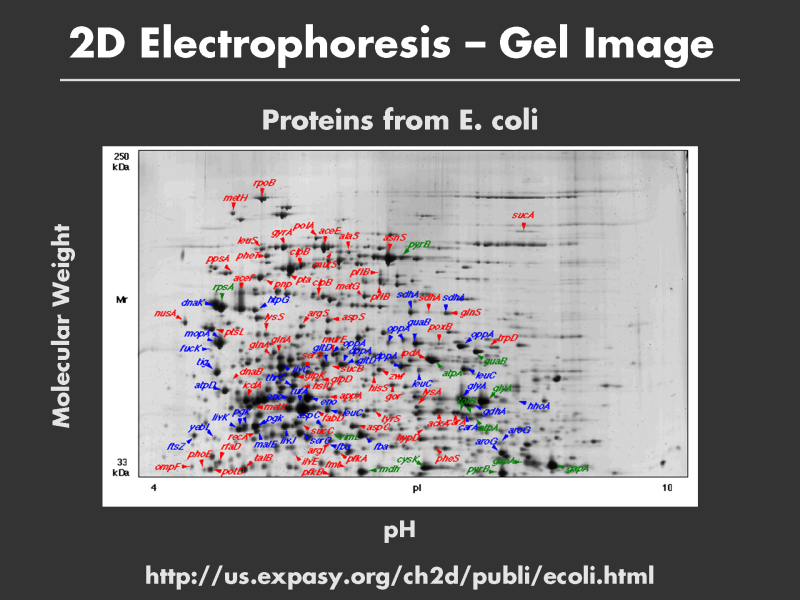
Time series, since they evolved from instruments, were the first types of graphs. Scatterplots took longer to develop.
Here is an example of a self-scattering scatterplot. This is a picture of a gel image. An extract from the bacterium E coli is placed on the gel. Gel electrophoresis displaces the proteins; the movement is a function of the protein?s weight and charge. On the x-axis is the pH and on the y-axis is the molecular weight in kilo-daltons. This experimental procedure creates a scatterplot of proteins.
Edward Tufte, in his book on the display of quantitative information, presents evidence that scatterplots represent sophisticated thinking by noting that popular media such as newspapers and magazines rarely show scatterplots. The implication is that society at large is not visually literate and cannot reason in such abstract spaces. This observation about society indeed is unfortunate, but it also emphasizes how these simple graphical techniques are not simple or obvious, and in fact quite sophisticated.
Reference:
[1] http://us.expasy.org/ch2d/publi/ecoli.html
Figure 2 High Mr range of the E. coli gel image with scales of 250-33 kDa and a pI between 4 and 10. Red labels highlight polypeptides identified by gel comparison with the Neidhardt 2-D maps. Green labels represent proteins identified by a combination of several techniques including gel comparison, microsequencing, and/or amino acid composition analysis. Blue labels show newly identified proteins using the "sequence tag" approach. "UP" indicates proteins with unknown sequences.
[2] For a discussion of ?graphical sophistication,? see Chapter 3, ?Sources of Graphical Integrity and Sophistication,? in The Visual Display of Quantitative Information, E. Tufte. Tufte uses the percentage of graphics that are ?relational? as a measure of graphical sophistication. According to Tufte, a graph is relational if it links two or more variables but is not a time series or a map.